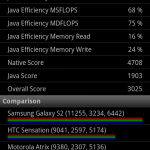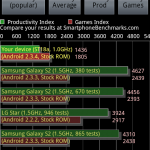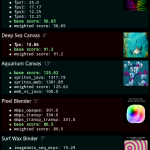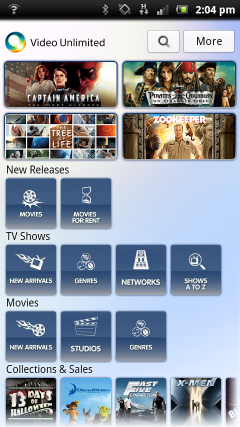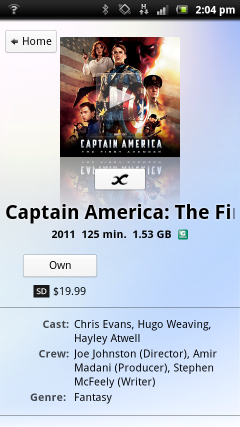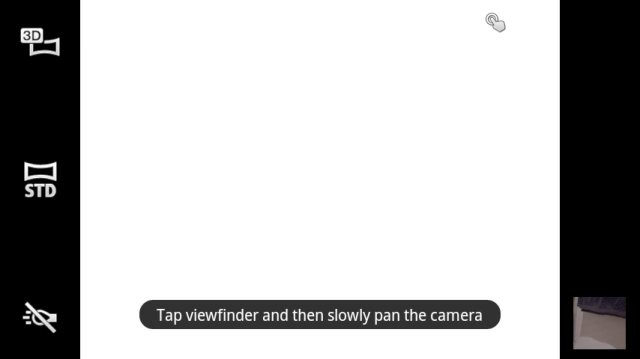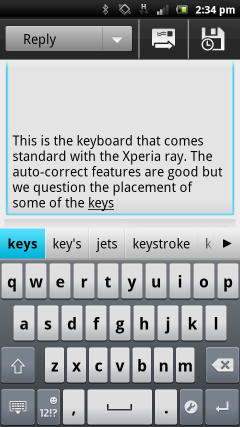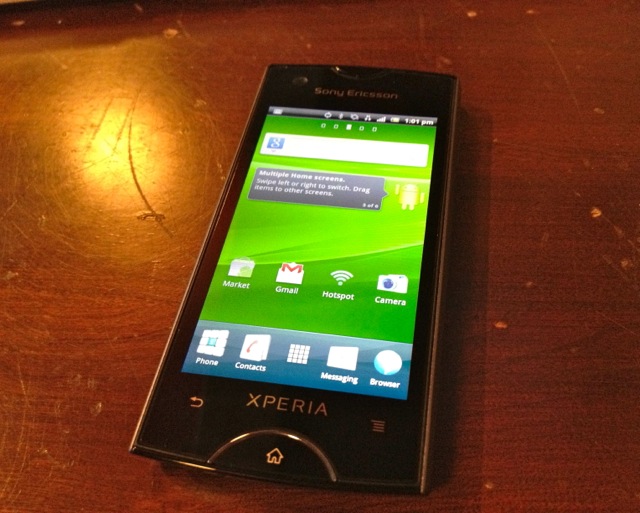
The term ‘mini’ is almost always a pejorative. It’s a synonym for small, weak, underpowered. So it’s probably a good thing that Sony Ericsson decided not to call the Xperia ray the Xperia arc mini, even though, for all intents and purposes, that’s what it is.
In reality, the Xperia ray is an extremely capable phone in a tiny package, and a coup for TELUS. It appeals to anyone who longs for the days of the tiny Nokia clamshell but wants the power of a high-end smartphone. It’s not going to change the phone industry, but it underscores Sony Ericsson’s progression into a forward-thinking Android manufacturer who knows its multiple demographics. Read on to see how much we liked it.
Specs:
– 3.3″ 854×480 pixel LCD display with Sony’s Bravia Engine
– 1Ghz Snapdragon MSM8255 SoC with Adreno 205 GPU
– 512MB RAM / 320MB internal storage /8GB included microSD card (32GB max)
– 8.1MP camera with Sony’s Exmor R sensor / 720p video capture @ 30fps / Video light
– WiFi (b/g/n), A-GPS, Bluetooth 2.1 with A2DP support
– 111.0 x 53.0 x 9.4 mm / 100g
– HSDPA 7.2Mbps / HSUPA 5.76Mbps
– 850/1900/2100 UMTS
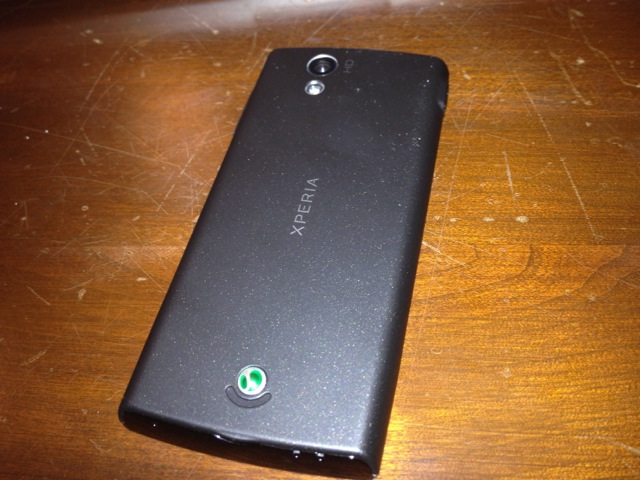
The Phone and initial thoughts
With a 3.3″ screen and a 9.4mm thickness, the ray turns heads. It resembles in many ways the Xperia arc released earlier this year except it lacks the distinctly curved back, opting instead for a straight and simple cover. Adorning the device is a matte, graphite-coloured polycarbonate, very sturdy and easy to hold.
There is a moulded 3.5mm headphone jack on top, slightly raised, to accommodate the most stubborn of headsets, a microUSB port on the left side and a simple volume rocker on the top right side. The ‘up’ arrow protrudes slightly from the volume rocker, while the ‘down’ is recessed, ensuring accurate pocket access. It’s these small details that delight.
The front is comprised of a sharp and bright FWVGA screen with a true 16:9 ratio. Sony has embedded its Bravia Engine technology into the ray, as it did with the arc, and it’s remarkable to witness on such a small screen. With the same resolution as the arc’s 4.2″ screen shrunk down to 3.3″, the ray has a healthy pixel density of 297ppi. While we wouldn’t necessarily recommend watching a full movie on such a diminutive screen, it’s worth loading up a couple HD movies on it just to get a sense of its capabilities. Colours are lush and vividly drawn, with staggering amounts of detail. Similarly good are brightness levels, though for some frustrating reason Sony Ericsson has neglected to include an auto-brightness setting, an essential battery-saving feature.
Forgoing the traditional four capacitive Android buttons, the ray includes an oval-shaped physical home button and omits the dedicated search button, keeping the front clean and stylish. The oval symmetry continues on top with the headset grill and a power button directly above it on the bezel. The home button has a lovely multi-coloured LED that slowly pulses green or orange depending on the notification.
The ray comes with a VGA front-facing camera and a rear 8MP shooter that uses Sony’s exellent Exmor R sensor. Unfortunately its usefulness is stymied with the inclusion not of a flash but, like the Xperia X10 before it, a video light. This means the LED is either on or off, even for still shots, somewhat negating its usefulness. You can still touch the screen to focus and take a photo, but white balance is not readjusted on the fly as with most flash-based shooters. Still shot results are excellent, though: the camera takes great macro shots and even better landscapes.
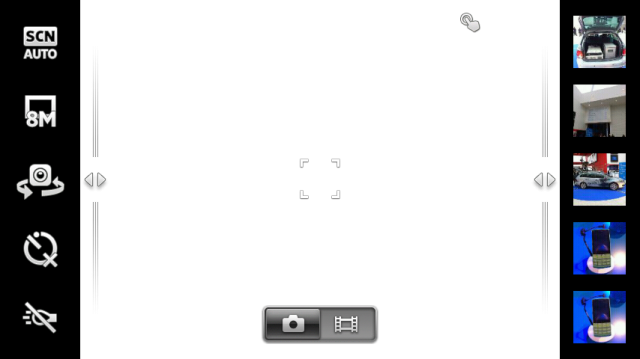 The camera UI is usable, if a bit aggravating at times. There is no dedicated shutter button: shots are taken by tapping on the screen. Controls are on the left side (scene select, resolution, flash, etc.) with a thumbnail row of the five last photos on the right. As with Windows Phone 7, you can swipe from the right side of the screen to reveal a makeshift gallery and, when finished, go right back to taking photos. This is a fantastic inclusion and something we used often.
The camera UI is usable, if a bit aggravating at times. There is no dedicated shutter button: shots are taken by tapping on the screen. Controls are on the left side (scene select, resolution, flash, etc.) with a thumbnail row of the five last photos on the right. As with Windows Phone 7, you can swipe from the right side of the screen to reveal a makeshift gallery and, when finished, go right back to taking photos. This is a fantastic inclusion and something we used often.
The ray’s design is a treat to see first hand. It’s light, thin and small, and as such easy to hold through long phone calls or slip into a pocket or purse. At 100g, it’s one of the lightest phones we’ve used, but due to its high quality chassis, doesn’t feel cheap. More companies should be using the materials SE are using with their latest crop of devices.
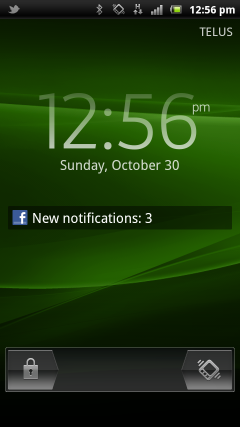
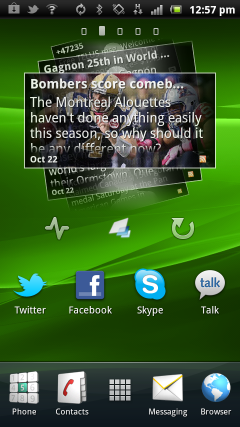
The Software and performance
The Xperia ray has Android 2.3.4 Gingerbread loaded onto the device. While not the latest version of 2.3, it’s modern enough to be considered up-to-date, considering many Canadian Android devices don’t yet have Gingerbread at all. Though much pared-down since the X10 halcyon days, Sony Ericsson’s distinctive neon blue colour scheme pervades, and there are numerous familiar widgets pre-installed across the five home screens. As you can see in the above screenshots, there are a bunch of different “themes” included with the ray that alter the system colours.
The 1Ghz processor keeps things humming along — we’ve always found SE’s Gingerbread builds to be relatively smooth — but we found browsing to be a stuttering endeavour. The browser does a decent job fitting desktop pages on the tiny screen, but for the most part we tried to find mobile equivalents; the screen is just too small to read all the way zoomed out. Granted, due to the high pixel density the text is clear and actually readable.
The Sunspider Javascript benchmark completed in a fantastic 3267.4ms, while the Vellamo, Smartbench 2011 and CF-Bench scores were 851, 1436 Productivity / 1805 Games, and 3025 respectively. Results were in line with typical 1Ghz single-core processors, if a bit higher in fact, but there is practically nothing that the ray cannot do — it will run pretty much all the games in the Marketplace but for those specifically designed for Tegra 2 — and that should help keep the naysayers from reducing the device to a single core/dual core debate. The Sunspider benchmark was in fact 30% faster than the brand new HTC Raider, which has a 1.2Ghz dual-core processor.
The UI is extremely usable, and portions of it we prefer to the stock Gingerbread experience. In the stock launcher, you can pinch on any of the homescreens to show a preview of the available widgets. We actually found this a more useful behaviour to that of LauncherPro or HTC’s Sense, which merely show zoomed-out previews of the entire homescreens.
Sony Ericsson includes a bunch of first-party applications meant to flesh out the stock Android experience. Most notable is the Video Unlimited app that is becoming standard on all SE hardware, including tablets. This includes movies for purchase or rental, and is a direct competitor with HTC’s new Watch software, along with Apple’s iTunes. Selection is excellent (for a relatively new service) and prices are within expectations: $19.99 for new release purchases, $3.99-$4.99 for 48-hour rentals.
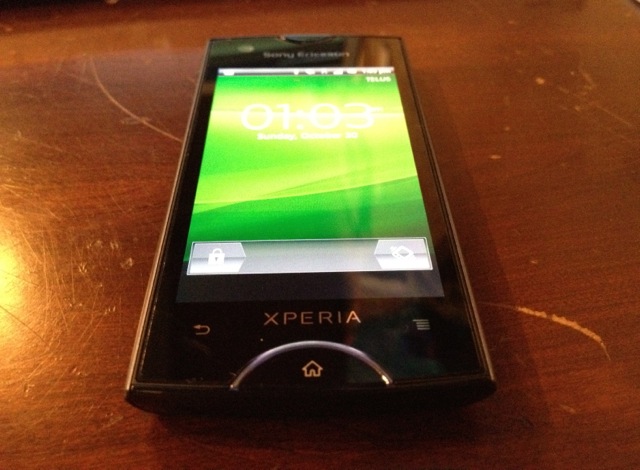
Also includes is the Shazam-emulating TrackID, meant to sniff out song titles based on snippets from the radio or television commercials. We found that it worked about as well as its competition, but since those services are now free for unlimited tags, found it to be a rather superfluous addition.
More useful is the native DLNA player, which pushes content from the device to a compatible television or computer. The ray also comes with a basic version of OfficeSuite, which can read and create Word-compatible documents. As per TELUS’ recent partnerships with Skype and Rdio, the apps are pre-installed on the device and credit can be taken directly from your monthly bill. For users trying to cut down on the number of debit sources, the convenience of seeing credit taken alongside your regular monthly charges is certainly a convenience, but we wonder how useful this is to the average credit card owner. Xperia ray users do get one month of free Rdio service, and a 20c Skype credit, so there is certainly some benefit to be gotten from the inclusion.
Curiously the ray comes with something called 3D camera. Since the device only has one backside sensor, we wondered what the heck the app did. Turns out Sony Ericsson’s interpretation of three dimensions is merely a synonym for panorama. With the software, the ray can take (quite excellent, we might add) sweeping shots of your surroundings. Instead of linearly stitching three or four static images, the ray films several frames of video across a straight X axis (and is overly sensitive in trying to do so, resulting in a lot of frustrating failed attempts) from left to right. Whether in 4:3 or 16:9 ratios, the results are on par with other solutions offered by HTC and Samsung, but we found Sony Ericsson’s user interface less intuitive and consistent than its competitors’.
Sony Ericsson also incorporates a feature called Facebook Inside Xperia, added recently to the Android 2.3.4 update for the Xperia Play and arc. It uses open APIs from the official Facebook app to provide seamless integration into its own Timescape and Mediascape widgets, pulling status updates and photos right onto the home screen. Disabled by default, the service also ties in with the Contacts app, showing you that person’s latest Facebook status updates (along with Twitter updates if you use the official app) along with photos and Facebook “Likes”. The integration is subtle but useful, though most of the information can be obtained with equal speed from the official Facebook app.
A bona fide useful inclusion, however, is the ability to natively take a screenshot of your current screen by holding down the power button until the context menu pops up. While this has been included in the stock version of Ice Cream Sandwich, it’s a nice feature to have on a Gingerbread device.
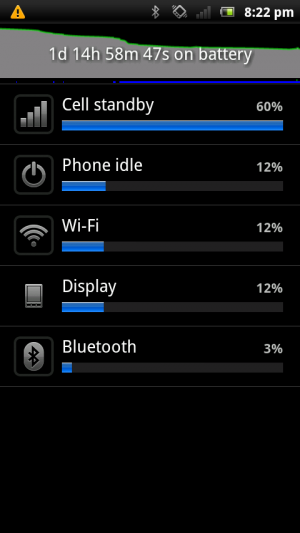
Battery Life
The Xperia ray comes with a relatively large 1500mAh battery for the device’s size, and we got excellent, multi-day battery life as a result. Indeed, if you’re a heavy Android user you’ll be happy to know that Sony Ericsson, without any Motorola-like power-saving features, has managed to do what most other OEMs cannot: keep an Android device alive for longer than the iPhone 4.
We had no issues using the Xperia ray for over 24 hours of moderate usage, often reaching 36 hours before the battery hit red. While usage patterns may vary from person to person, we’re confident the ray is a good choice for someone looking to solve Android’s traditional battery fickleness.
The high efficiency is owed to a couple things: first, the Snapdragon MSM8255 processor is relatively low-power, especially at 1Ghz. Add the fact that the ray has one of the smallest screens on a mid-range Android device running Gingerbread, and you have a potent power-sipping solution.
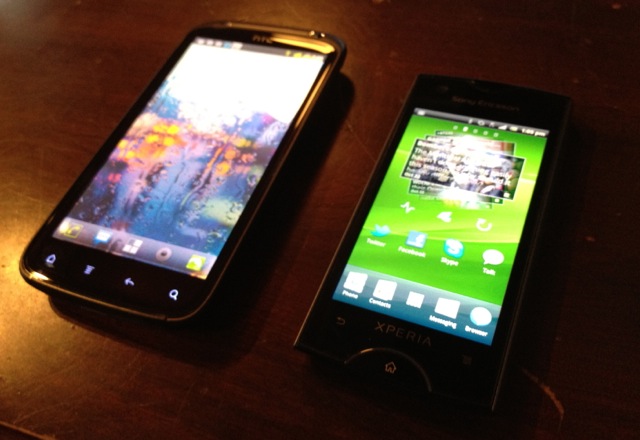
Phone Calls and Other Stuff
The Xperia ray sounds great over TELUS’ network, via both the earpiece and the speaker. Network speeds disappointed, however, as the device only supports up to 7.2Mbps in the downstream; we did not exceed 3Mbps in our Speedtest.net tests in either direction.
Though there are no special business-related features, the ray has a great suite of replacement apps, and we really enjoyed using the Mail, Calendar and Contacts apps, all of which are endowed with tiny flourishes to consolidate the Sony Ericsson Android makeover.
Unfortunately the keyboard, which is admittedly much improved over the X10, is a bit cramped when used in portrait mode. SE thought it a good idea to include a “hide keyboard” button on the bottom left, taking up much needed-room for the “numbers/symbols” key. As a result we kept accidentally hiding the keyboard when we wanted to enter our passwords or a phone number. We find the issue disappeared when changing to landscape mode, and SE includes a keypad-style portrait keyboard for those who long for the good ol’ punch-type days.
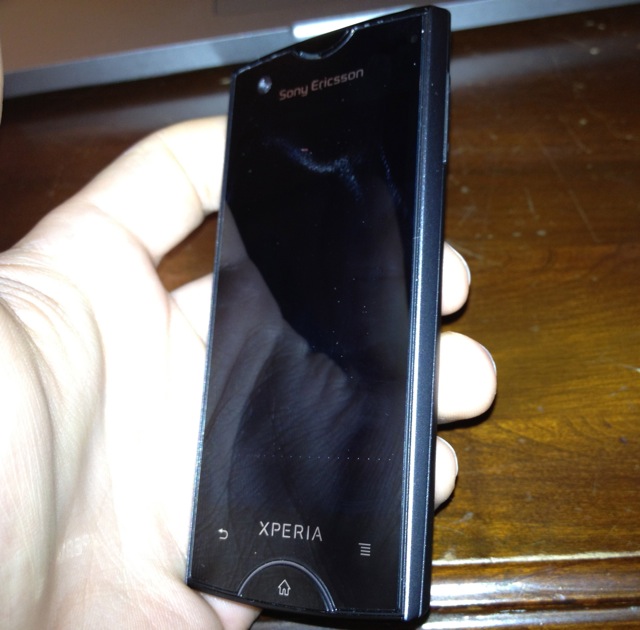
Conclusions
The Xperia ray is going to turn heads not because it’s the most powerful, the thinnest or the most modern-looking. Instead, it will attract smartphone users who want compact, fast and stable. It’s a mature Android solution with few sacrifices for its size.
It has one of the highest-density LCD displays currently on the market at 297ppi, and Sony’s Bravia Engine actually makes a difference when viewing movies and photos. Because it uses the same resolution as its 4.2” Xperia arc cousin, text is sharp and pictures pop, and all apps in the market are resolution-compatible. You can’t say that for the majority of devices with a 3.3” screen size.
While we don’t yet know the price that the Xperia ray will be, but we can’t imagine it will break the bank. In any case, the investment should be a positive one, as we enjoyed the heck of out this small device.
The Sony Ericsson Xperia ray will be available on TELUS for $49.99 on a 3-year term, and $379.99 outright. Check out the landing page for more information.
Rating: 8/10
Pros:
– Gorgeous, vibrant screen with high pixel density
– Sony Ericsson’s Android modifications are subtle and useful
– Good performance for a last-generation processor
– Camera takes great shots and excellent 720p video
– Size is a huge plus for those looking for a smaller Android device that doesn’t suck
– Design is austere and modern
– Excellent battery life
Cons:
– Camera UI is a bit clunky
– Small size may be a turnoff for some
– Last year’s hardware in a modern device
– Included apps are not uninstallable
– Portrait keyboard is too small, key placements questionable
– No camera flash or automatic screen brightness settings
– Low amount of application storage (only 320MB)
MobileSyrup may earn a commission from purchases made via our links, which helps fund the journalism we provide free on our website. These links do not influence our editorial content. Support us here.



